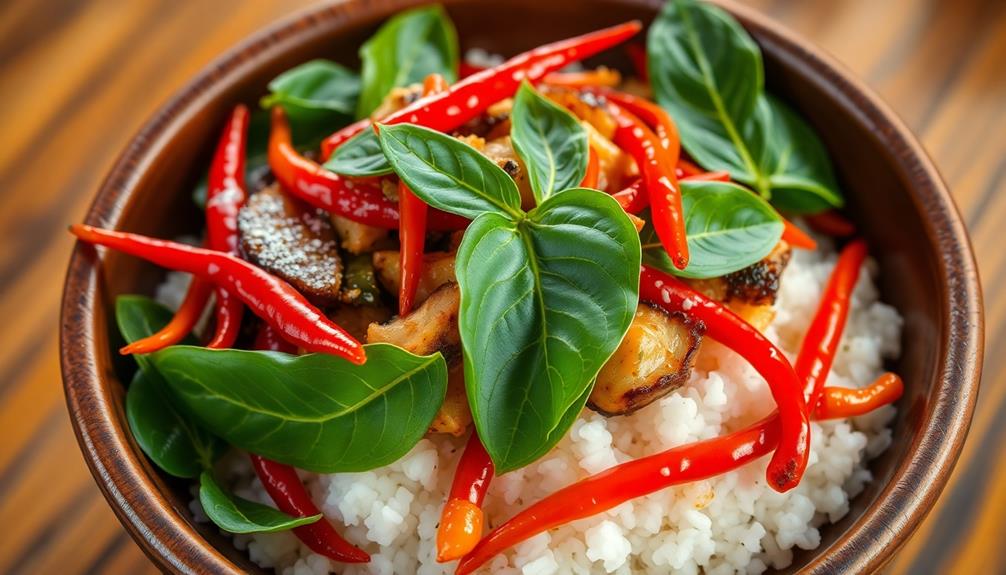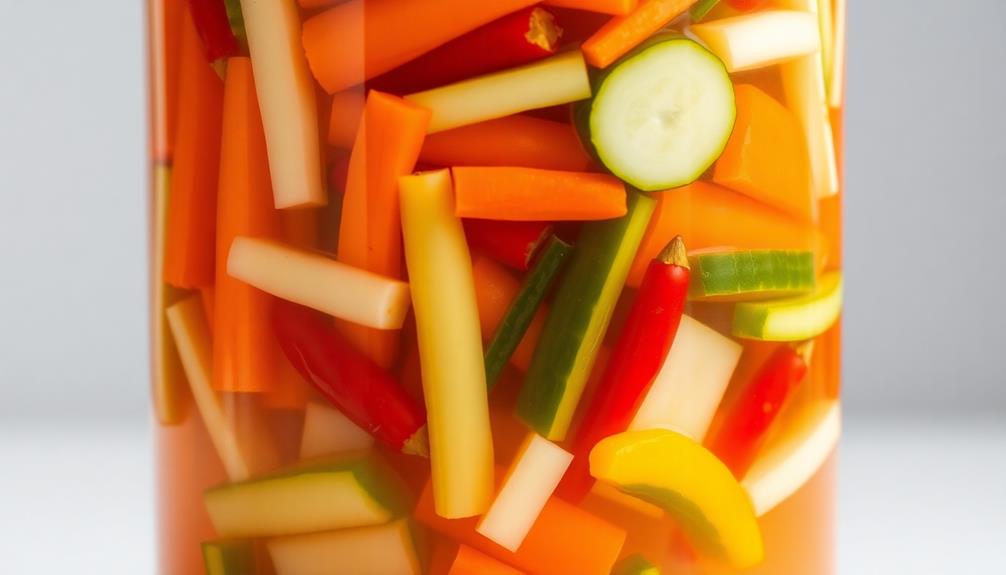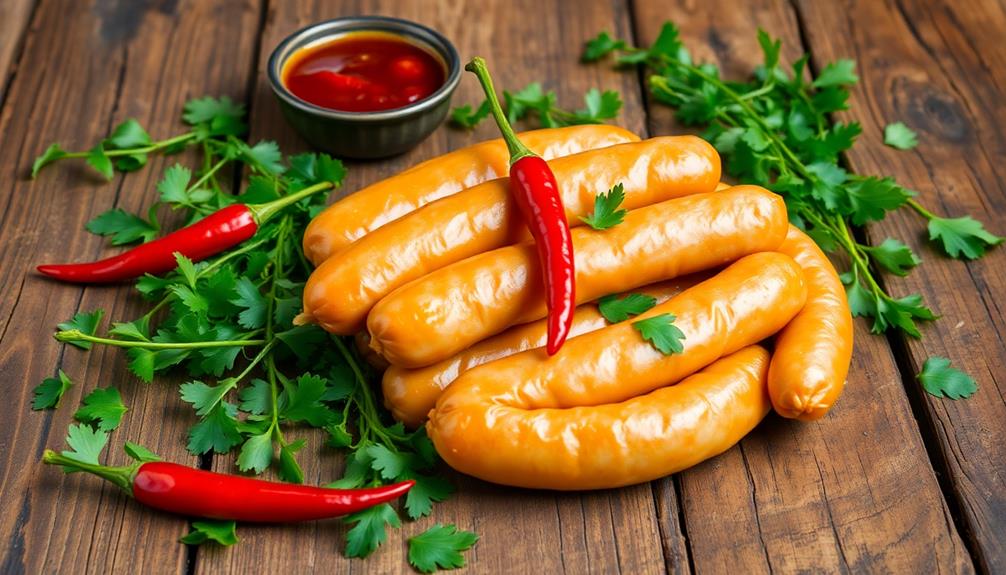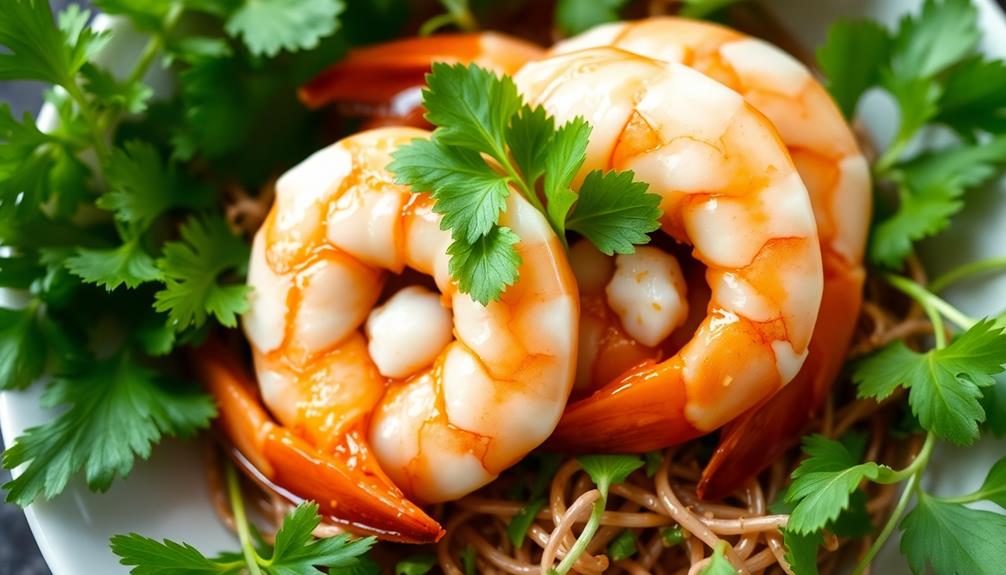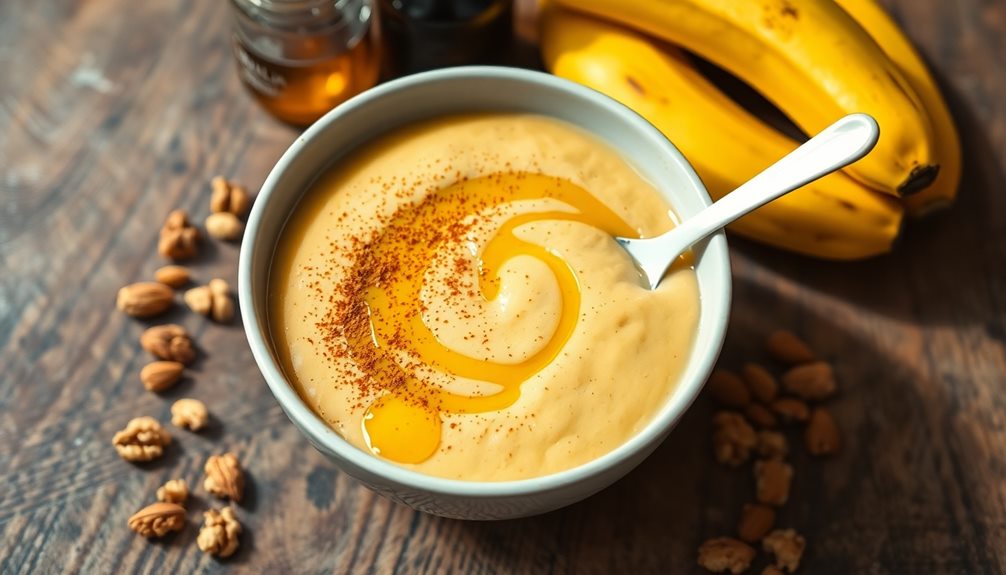Pad Kra Pao is a beloved Thai stir-fried dish that traces its origins back to the 14th century Ayutthaya period. Chinese immigrants introduced the wok-cooking technique, which Thai cooks adapted using local ingredients like fish sauce and chili peppers. The key is aromatic holy basil, which gives the dish its unique flavor profile. You'll use ground chicken or pork, garlic, Thai chilies, fish sauce, soy sauce, and palm sugar to create a harmony of sweet, salty, and spicy flavors. Stir-fry the meat quickly over high heat, then toss in the basil for an aromatic infusion. Served over steamed jasmine rice, this Thai street food staple is a must-try for anyone exploring authentic Thai cuisine. Let's dive deeper into how to make this flavorful dish. If you’re a fan of Pad Kra Pao, you may also want to try your hand at making a traditional pad see ew recipe. This stir-fried noodle dish is another popular street food option in Thailand, featuring wide rice noodles, Chinese broccoli, and your choice of protein. The combination of sweet soy sauce and dark soy sauce gives pad see ew its signature savory flavor.
Key Takeaways
- Pad Kra Pao is a classic Thai dish with origins tracing back to the 14th century Ayutthaya period, introduced by Chinese immigrants.
- The dish features a harmony of sweet, salty, and spicy flavors, with the aromatic holy basil as a key ingredient.
- To prepare Pad Kra Pao, the meat is stir-fried quickly at high heat with garlic, chili peppers, fish sauce, and sugar for a unique taste.
- Pad Kra Pao is a staple in Thai street food culture and often enjoyed as a quick, satisfying meal with steamed jasmine rice and a fried egg.
- The fresh, high-quality ingredients are crucial for achieving the best results and capturing the vibrant flavors that characterize Thai cuisine.
History
Pad Kra Pao, a beloved Thai dish, has origins dating back centuries. This classic stir-fry, featuring minced meat and aromatic holy basil, is a beloved staple in Thai cuisine.
Its roots can be traced to the Ayutthaya period of the 14th century, when Chinese immigrants brought their wok-cooking techniques to the region. Over time, Thai cooks adapted the dish, adding local ingredients like fish sauce, chili peppers, and of course, the distinctive holy basil.
The result is a vibrant, flavor-packed meal that's become a beloved part of Thai culture. Today, Pad Kra Pao is enjoyed throughout Thailand, from street food vendors to high-end restaurants.
Its enduring popularity speaks to the dish's perfect balance of savory, spicy, and herbal flavors. Whether you're a seasoned Thai food lover or new to the cuisine, Pad Kra Pao is a must-try that'll transport you to the bustling streets of Bangkok.
Recipe
Pad Kra Pao is a classic Thai stir-fried dish featuring minced meat, chili, and holy basil. The combination of savory, spicy, and aromatic flavors makes this dish a beloved staple in Thai cuisine. Originating from the central region of Thailand, Pad Kra Pao has become a popular street food and home-cooked meal enjoyed worldwide.
The key to a delicious Pad Kra Pao lies in the balance of ingredients and the proper cooking technique. The dish's signature flavor comes from the use of fresh holy basil, which lends a unique anise-like aroma and peppery taste. When combined with the umami-rich fish sauce and the heat of chili peppers, the result is a harmonious and mouthwatering dish.
- 1 lb ground chicken or pork
- 3 cloves garlic, minced
- 3-5 Thai chili peppers, sliced (or 1-2 serrano peppers)
- 1 tablespoon fish sauce
- 1 tablespoon soy sauce
- 1 teaspoon brown sugar
- 1 cup fresh holy basil leaves
- 2 tablespoons vegetable oil
In a wok or large skillet, heat the vegetable oil over high heat. Add the minced garlic and sliced chili peppers, and stir-fry until fragrant, about 30 seconds.
Then, add the ground meat and stir-fry, breaking it up with a spatula, until no longer pink, approximately 2-3 minutes. Pour in the fish sauce, soy sauce, and brown sugar, and continue to stir-fry for another minute, allowing the flavors to blend.
Finally, add the fresh holy basil leaves and toss everything together until the basil is just wilted, about 1 minute.
For the best results, be sure to use fresh, high-quality ingredients. Adjust the amount of chili peppers to your desired level of spiciness. Serve the Pad Kra Pao immediately over steamed jasmine rice for a truly authentic Thai dining experience.
Cooking Steps
Start by chopping the garlic and chilies finely.
Then, add the sliced onions and sauté them in the pan.
Next, pour in the fish sauce and sugar – this will add tons of flavor to your dish.
Step 1. Chop Garlic and Chilies Finely

Next, chop the garlic and chilies finely. You'll want to use a sharp knife and a steady hand for this step.
Start by peeling the garlic cloves, then finely mince them, aiming for pieces about the size of a match head. This will help the garlic release its flavor quickly when you add it to the wok.
For the chilies, you can use Thai chilies or any other small, spicy variety. Slice them lengthwise, then crosswise into thin strips.
Be careful to avoid touching your eyes after handling the chilies, as the oils can be quite potent.
The finely chopped garlic and chilies will form the aromatic base of your Pad Kra Pao, infusing the dish with their bold, savory flavors.
Take your time with this step – the better you chop the ingredients, the more evenly they'll cook and the more delicious your final dish will be.
Step 2. Add Sliced Onions
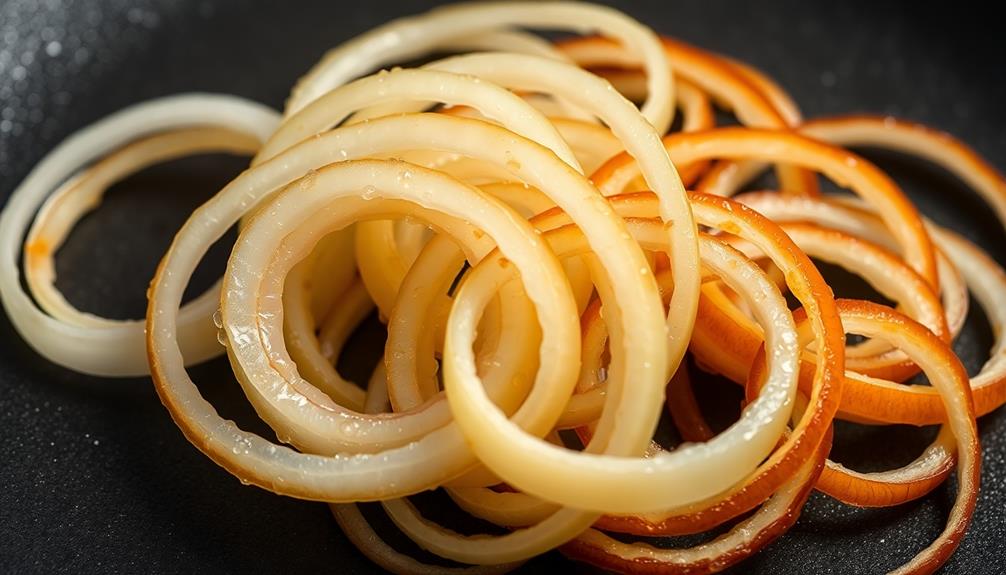
After chopping the garlic and chilies, you'll want to add the sliced onions to the wok.
The onions will add a nice crunch and subtle sweetness to the dish. Toss the onion slices into the hot oil and let them sizzle for about a minute, stirring frequently.
You'll notice the onions start to become translucent and soften up. This is exactly what you're going for – you don't want them to brown too much, just enough to take the raw edge off.
Once the onions are cooked through but still have a bit of bite, it's time to move on to the next step.
The aroma of the sautéed garlic, chilies, and onions is really starting to fill the kitchen now, making your mouth water in anticipation.
Keep an eye on the heat and stir everything together well to ensure the onions are evenly cooked.
Step 3. Add Fish Sauce and Sugar

With the onions nicely cooked, it's time to add the fish sauce and sugar. These two ingredients will give your Pad Kra Pao that authentic Thai flavor you're looking for.
Start by pouring in about 1-2 tablespoons of fish sauce. The salty, umami-rich fish sauce balances the heat from the chilies and complements the aromatic holy basil.
Next, sprinkle in a teaspoon or two of white sugar. The sugar helps to caramelize the dish and adds a touch of sweetness to offset the saltiness of the fish sauce.
Stir everything together well, making sure the fish sauce and sugar are evenly distributed. Let the mixture simmer for a minute or two, allowing the flavors to meld.
You'll notice the sauce thickening up and coating the meat and vegetables beautifully. Keep an eye on it, stirring occasionally, until you're satisfied with the taste and texture.
The fish sauce and sugar are the final touches that will make your Pad Kra Pao truly sing.
Step 4. Add Chopped Thai Holy Basil

The final step in preparing your authentic Pad Kra Pao is to add the chopped Thai holy basil. This herb is the star of the dish, providing a unique, aromatic flavor that can't be replicated.
Gather a generous handful of fresh, vibrant Thai holy basil leaves and give them a rough chop. Don't be shy – you want plenty of that earthy, anise-like essence in every bite.
Toss the chopped basil into the sizzling wok, stirring it quickly to combine with the other ingredients. The basil will quickly wilt and release its fragrant oils, infusing the entire dish.
Be sure to take a deep breath and savor the wonderful aroma! Continue to stir-fry for just another 30 seconds or so, allowing the basil to marry with the other flavors.
Your Pad Kra Pao is now complete and ready to serve over steaming jasmine rice. Enjoy the balance of spicy, salty, and herbal notes in every flavorful mouthful.
Step 5. Add Meat and Stir-fry Quickly
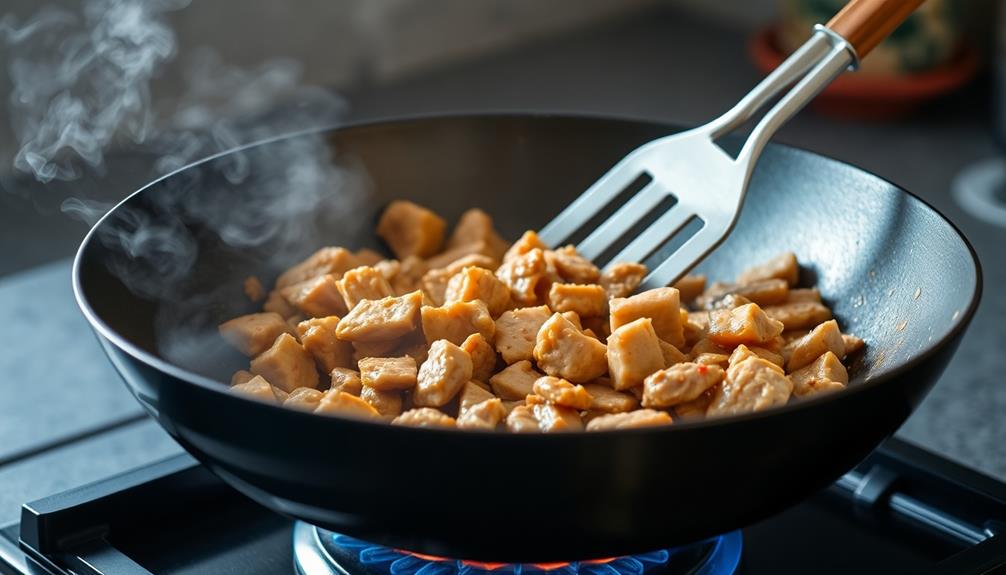
Once the aromatics have been sizzled, it's time to add the meat and stir-fry quickly. Make sure the meat is cut into thin, bite-sized pieces so it cooks through rapidly. Toss the meat into the hot pan and stir constantly to prevent burning. The high heat will sear the outside of the meat, locking in the juices and infusing it with the fragrant flavors of the garlic, shallots, and chilies.
Keep the meat moving, flipping and stirring for about 2-3 minutes, until it's no longer pink. Be careful not to overcrowd the pan, as you want the meat to sear instead of steam. If needed, work in batches to ensure the meat has enough space to brown properly.
Once the meat is cooked through, it's ready to be combined with the holy basil and other seasonings. This quick stir-fry technique helps the meat stay tender and juicy while absorbing all the bold Thai flavors.
Final Thoughts
Pad Kra Pao is a delightful Thai dish that offers a burst of flavors, from the fragrant basil to the savory ground meat.
Now that you've mastered the art of stir-frying the ingredients, it's time to enjoy the final result. The key to a successful Pad Kra Pao lies in the balance of flavors – the saltiness of the fish sauce, the sweetness of the palm sugar, and the heat from the chili peppers should all come together in perfect harmony.
As you savor each bite, you'll be transported to the bustling streets of Bangkok, where this dish is a beloved street food. The combination of tender meat, crisp vegetables, and aromatic basil is truly irresistible.
Don't be afraid to experiment with different types of meat or add extra vegetables to suit your personal preferences. With a little practice, you'll be able to craft a Pad Kra Pao that's tailored to your taste buds.
Frequently Asked Questions
Where Can I Buy Holy Basil Leaves?
You can find holy basil leaves at Asian grocery stores, specialty food markets, or online. Many local farmers' markets may also carry this fragrant herb if you're lucky. Check around to see where it's available in your area.
Can I Substitute Other Basil Types for Holy Basil?
You can substitute other basil types for holy basil, but the flavor won't be quite the same. Thai basil or regular basil will work, but they have a different taste profile than the unique holy basil.
How Long Does Pad Kra Pao Keep in the Fridge?
Pad Kra Pao won't keep in the fridge for long, as the fresh basil will wilt and lose its flavor. You'll want to enjoy it within 2-3 days for the best taste and texture.
Is Pad Kra Pao Suitable for Vegetarians or Vegans?
Pad Kra Pao isn't suitable for vegetarians or vegans as it traditionally contains meat. However, you can make a plant-based version by substituting the meat with tofu, tempeh, or mushrooms and using vegetable-based sauces.
Can I Make Pad Kra Pao With Chicken Instead of Beef?
Absolutely, you can make the dish with chicken instead of beef. Just substitute the meat and adjust the cooking time as necessary. The dish will still be delicious and you can enjoy it as a chicken-based meal.
